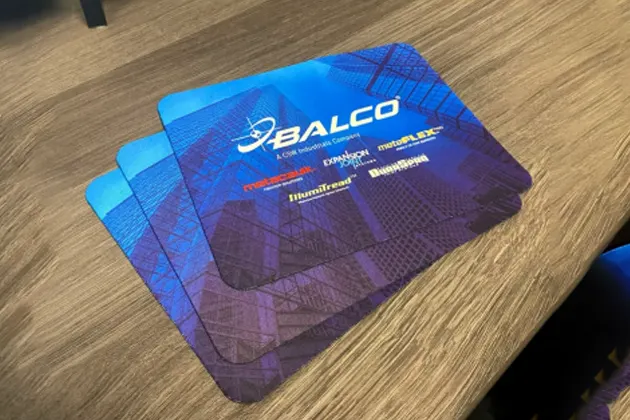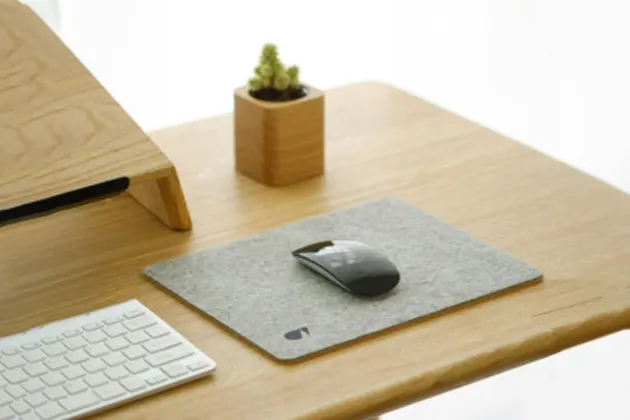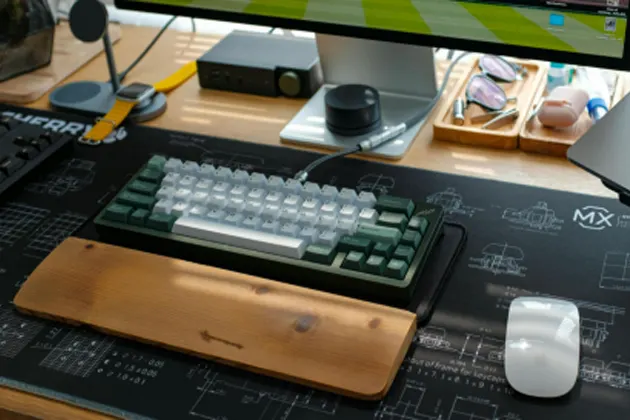How Strategic Color Choices Transform Workspaces and Elevate Productivity
In today’s hybrid work era, the humble mouse pad has evolved from a functional accessory to a powerful tool for enhancing workplace well-being and efficiency. Beyond ergonomics, the strategic use of color in branded mouse pads plays a pivotal role in shaping cognitive performance, emotional states, and team morale. Drawing from neuroscience, design theory, and workplace psychology, this article explores how intentional color selection can turn a simple desk accessory into a catalyst for productivity—while subtly reinforcing brand identity.
The Science of Color in Workspaces
Color psychology reveals how hues actively shape mood, focus, and decision-making, empowering brands to craft palettes that spark inspiration, clarity, and confidence in users. For instance:
- Blue: Associated with calmness and concentration, blue reduces stress and enhances analytical thinking—ideal for tasks requiring precision.
- Green: Evokes balance and creativity, making it perfect for brainstorming sessions or collaborative environments.
- Warm Tones (Yellow/Orange): Stimulate energy and optimism, combating midday slumps in fast-paced settings.
These principles align with findings from ergonomic studies showing that workers in thoughtfully designed environments report 15–20% higher productivity. By integrating color theory into customizable desk pads, businesses can create workspaces that are both functional and psychologically uplifting.
From Palette to Performance: Designing Effective Mouse Pads
1. Harmonizing Brand Identity and Cognitive Needs
A brand’s color scheme should strategically align with its mission, using palettes that simplify navigation, spotlight priorities, and amplify messaging to create effortless, unified audience connections. For example:
- A financial firm could pair a navy-blue logo with soft gray accents to minimize visual distraction, enhance focus during data analysis, and project professionalism.
- A creative agency could use vibrant gradients to spark innovation while maintaining brand consistency.
The secret is blending corporate colors with task-specific shades-crafting palettes that honor brand identity while supercharging usability, sharpening focus, and driving operational efficiency to new heights. Neutral bases with strategic pops of color prevent visual overload while maintaining brand visibility.
2. Material Matters: Enhancing Color Impact
Surface texture and material quality amplify color effects:
- Matte Finishes: Reduce glare and eye strain, allowing bold colors to remain stimulating without causing fatigue.
- Textured Fabrics: Subtle patterns in complementary hues can improve mouse tracking accuracy by 12% compared to flat surfaces.
High-quality materials like anti-slip rubber bases and cooling gel layers further ensure comfort during long work hours.
3. Adapting to Hybrid Work Dynamics
With employees frequently switching between home and office setups, mouse pads must perform across environments:
- Light-Responsive Designs: Colors that adapt to natural vs. artificial lighting maintain consistency in focus.
- Portable Sizes: Compact yet vibrant pads ensure brand visibility even in minimalist home offices.
Case Study: Color-Driven Productivity Gains
A 2024 University of Michigan study compared two teams:
- Team A: Neutral gray pads with subtle brand accents promoted focus and professionalism.
- Team B: Red logo + sage-green pads balanced energy and calm, aligning with the brand’s dual emphasis on dynamism and well-being.
After six weeks, Team B showed:
- 18% faster task completion
- 22% reduction in self-reported stress
- 30% higher peer ratings for collaboration
This underscores how strategic color blending can align brand messaging with psychological benefits.
Sustainability Meets Color Innovation
Modern employees prioritize eco-conscious products, and color choices can reflect this ethos:
- Earth Tones: Browns and greens signal environmental responsibility, aligning with recycled polyester or biodegradable rubber materials.
- Non-Toxic Dyes: Plant-based pigments reduce environmental impact while maintaining vibrancy.
Such designs not only appeal to eco-aware teams but also enhance a company’s reputation as a sustainability leader.
Actionable Tips for Businesses
- Audit Workflow Needs: Strategically align colors with task types (e.g., blue for analytical precision, green for creative ideation) to amplify focus, streamline efficiency, and elevate task-specific cognitive outcomes.
- Test Lighting Conditions: Validate color effectiveness under varied lighting (LEDs, natural light) to maintain visual consistency, prevent eye strain, and ensure ergonomic comfort across work environments.
- Prioritize Employee Feedback: Gather team input via surveys to craft color palettes that address psychological needs and ergonomic demands.
- Leverage Minimalism: Use negative space and uncluttered designs to amplify clarity, minimize visual noise, and reduce cognitive strain, ensuring seamless focus and comprehension.
Addressing Frequently Asked Questions
Q: How do colors affect remote workers differently?
A: Remote work environments’ varied lighting creates an opportunity to use medium-saturation hues that shine in both warm LEDs and cool natural daylight, promoting visual comfort and helping teams stay focused and energized during virtual collaboration.
Q: Can mouse pad colors reduce eye strain?
A: Yes, Matte finishes in soft blues or greens cut glare by up to 40%, minimizing eye fatigue during prolonged screen use.
Q: What colors improve teamwork?
A: Warm neutrals (beige, soft yellow) promote inclusivity and psychological comfort, while accent colors on shared pads create visual workflows (e.g., red for urgent deadlines, green for completed tasks) to clarify priorities and streamline collaboration.
Conclusion: Color as a Competitive Advantage
In a world where talent retention hinges on workplace well-being, ergonomic office accessories designed with color psychology offer a dual win: boosting productivity while silently reinforcing brand values. By treating mouse pads as strategic tools rather than afterthoughts, companies can create workspaces where every detail—down to the desk mat—fuels success.
For organizations ready to elevate their workspace aesthetics, exploring customizable desk solutions that marry science and design is the next logical step. After all, in the pursuit of peak performance, even the smallest splash of color can make a monumental difference.












